
Baron Montalt (sometimes given as Mohault or Mohaut) was a title that was created twice in the Peerage of England.

Baron Montalt (sometimes given as Mohault or Mohaut) was a title that was created twice in the Peerage of England.
The first creation of the title was for Roger de Montalt, who was summoned to parliament on 23 June 1295. On his death two years later, the barony became extinct. The second creation was for Robert de Montalt, who was summoned to parliament on 6 February 1299. He was the younger brother of the first baron of the 1295 creation. On his death thirty years later, the barony became extinct. He died of his wounds after fighting a duel against Robert de Mablethorpe. (He was the son and heir of Sir William of Mablethorpe, lord of the manor of Mablethorpe, Lincolnshire, which was located on the site of the present Mablethorpe Hall) at Earls Bridge on the outskirts of Mablethorpe Lincolnshire. Both men died of their wounds. Robert de Montalt was buried at All Saints Church in Maltby le Marsh. He was buried in the chancel; his tomb has an effigy of a cross-legged knight wearing chain mail and surcoat. At his head are two angels by the pillow and at his feet, two lions biting each other.
Robert de Mablethorpe was buried at St Mary's Church, Mablethorpe. There is an effigy of Sir Robert in the chancel of the church; the head of the figure rests on a pillow upheld by angels, and beneath the feet are two dragons engaged in fierce combat. The tail of the one impaled by the spur of the knight, with the foot resting on the back of the other.
The De Montalts and the De Mablethorpes were two of Mablethorpe's most noble families; however, the two families were engaged in a feud which had lasted 96 years after their ancestors had quarreled over which family would present the next rectors of Saint Mary's and Saint Peter's Parish Churches. The feud started when Roger de Montalt and Thomas son of Endo de Mablethorpe in 1233, had quarrelled about the right of presenting the Rector of St Mary's and a decision was made that Thomas should present the new Rector, Richard de Wyverton.
The feud concluded when on 26 December 1329, Robert de Montalt met Robert de Mablethorpe on the bridge (two miles from the west of Mablethorpe), Robert De Montalt had accused Robert De Mablethorpe of cowardice in battle and told him to get out of his way, Robert De Mablethorpe resented the unjust remarks and refused to move, Robert De Montalt began to have doubts, but he did not dare to withdraw the charge as if he did, his five-week bride would think him afraid.
The duel would settle the matter and whoever survived the duel would gain "satisfaction", by restoring one's honour by demonstrating a willingness to risk one's life for it. The De Montalts stood on the Maltby-le-Marsh side of Earls Bridge and the Mablethorpes stood on the side nearest to Mablethorpe. The two Earls duelled with ghastly determination and both men understood, one of the earls had to kill the other, and that one of them would not be crossing the bridge alive. Records state that both earls attacked each other like lions. They were evenly matched and experienced in weapons and the harsh cry of swords against armour lasted for hours, but at last a sword stroke from each took its toll, and at the same time the two knights fell dead together.
Robert de Montalt's nephew Robert de Morley inherited his uncle's lands. Robert De Mablethorpe's daughter Elizabeth, who was married to Thomas Fitzwilliam of Sprotbrough near Doncaster in Yorkshire, inherited her father's manor and lands in Mablethorpe. The FitzWilliam family lived at Mablethorpe for 290 years.
The Montalt Manor and lands once owned by the Montalt family and the advowson of St Marys that went with it changed hands frequently. It is not difficult to suggest the reasons why this occurred. Serious flooding took place again during this period and much farm land must have been destroyed, making Mablethorpe and district very poor.
In 1332, a subsidy roll was made; in that year a tax was lived on freeholders, Sokemen and the wealthier villains. Only seven places in Lindsey had more than 100 taxpayers. In August 1335 the sea broke through the banks off Mablethorpe causing flooding, drowning sheep and cows and destroying crops. This flood lasted two or more days.
When Robert Morley presented one of his relations named William to be chaplain of the chantry chapel of Saint Lawrence at St Mary's Church, William was assigned the task of praying for the souls of the dead and's family. This was probably due to the founding the chantry in 1316.
In 1335, of serious flooding when King Edward III of England confirmed an agreement whereby Robert Morley was granted permission to exchange the Montalt manor of Mablethorpe for Queens Isabella's manor of Framsden in Suffolk. The agreement also stated that she acquired rent and services of land held by Elizabeth de Malberthorp and her husband Thomas FlitzWwilliam III (Elizabeth had inherited her father's Roberts Manor and lands). Queen Isabel had purchased the Montalt Manor to spend time with the FitzWilliams as they were related to the Plantagenets through the blood line of King Henry II's half-brother Hamelin de Gatinais.

Castle Rising is a ruined medieval fortification in the village of Castle Rising, Norfolk, England. It was built soon after 1138 by William d'Aubigny II, who had risen through the ranks of the Anglo-Norman nobility to become the Earl of Arundel. With his new wealth, he constructed Castle Rising and its surrounding deer park, a combination of fortress and palatial hunting lodge. It was inherited by William's descendants before passing into the hands of the de Montalt family in 1243. The Montalts later sold the castle to Queen Isabella, who lived there after her fall from power in 1330. Isabella extended the castle buildings and enjoyed a regal lifestyle, entertaining her son, Edward III, on several occasions. After her death, it was granted to Edward, the Black Prince, to form part of the Duchy of Cornwall.

Earl of Devon is a title that has been created several times in the Peerage of England. It was possessed first by the Redvers family, and later by the Courtenay family. It is not to be confused with the title of Earl of Devonshire, which is held by the Duke of Devonshire, although the letters patent for the creation of the latter peerages used the same Latin words, Comes Devon(iae). It was a re-invention, if not an actual continuation, of the pre-Conquest office of Ealdorman of Devon.

Viscount Hawarden is a title in the Peerage of Ireland.
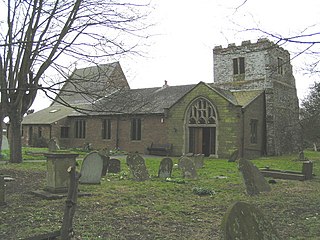
Mablethorpe is a seaside town in the civil parish of Mablethorpe and Sutton, in the East Lindsey district of Lincolnshire, England. In 1961 the civil parish had a population of 3,611. On 1 April 1974 the parish was changed to form "Mablethorpe and Sutton". The population including nearby Sutton-on-Sea was 12,531 at the 2011 census and estimated at 12,633 in 2019.
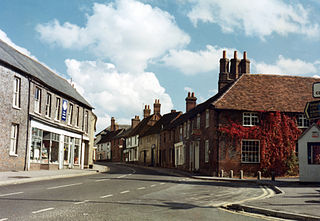
Kingsclere is a large village and civil parish in Hampshire, England.

Arlington was a manor, and is a village and civil parish in the North Devon district of Devon in England. The parish includes the villages of Arlington and Arlington Beccott. The population of the parish is 98.

Westoning is a village and civil parish in Bedfordshire, England. It is located around 0.5 miles (0.8 km) south of the town of Flitwick. The River Flit flows behind the Westoning stud farm.
Baron Morley was a title in the peerage of England. On 29 December 1299 William Morley, lord of the manor of Morley Saint Botolph in Norfolk, was summoned to Parliament, regarded as the creation of a hereditary barony. At the death of the sixth baron in 1443, the title was inherited by his daughter Eleanor Morley, the wife of Sir William Lovel, who was summoned to parliament as Baron Morley in right of his wife and died in 1476, shortly before her. It was then inherited by their son Henry Lovel, following whose death in 1489 it came to his sister Alice Lovel, who was married to Henry Parker. The title was then held by her descendants in the Parker family until 1697 when, on the death of the fifteenth baron without children, the title came to an end.
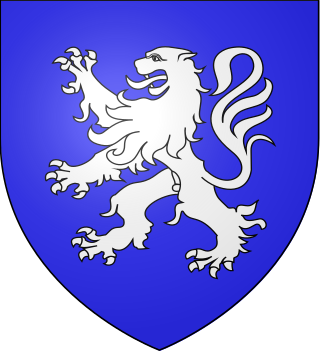
Roger de Montalt, 1st Baron Montalt (1265–1297) was a baron who rebelled for a time against Henry III of England. Roger was one of the sons of Sir Robert de Monaut, Knight. Robert married Joan Mowbray. Joan (1247–1284) was born in Pontefract, W-Riding, Yorkshire. Roger was the brother of another Robert de Montalt.

Robert de Montalt, 1st Baron Montalt (1270–1329), Lord of Mold and Hawarden, was an English noble. He was a signatory of the Baron's Letter to Pope Boniface VIII in 1301.

Bayworth is a hamlet in the civil parish of Sunningwell about 3 miles (5 km) south of Oxford. Bayworth was part of Berkshire until the 1974 boundary changes transferred it to Oxfordshire.
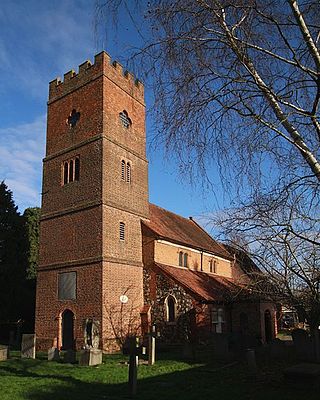
Littleton is a village in the Borough of Spelthorne, approximately 16 mi (26 km) west of central London. Historically part of the county of Middlesex, it was transferred to Surrey in 1965. It is the location of Shepperton Studios.
Sir Robert de Malberthorp was an English lawyer, and Chief Justice of the King's Bench in 1329. He was the son and heir of Sir William of Malberthorpe, lord of the manor of Mablethorpe, Lincolnshire, which was located on the site of the present Mablethorpe Hall.
Gerard II de Lisle, 1st Baron Lisle of Kingston Lisle was an English nobleman and soldier during King Edward III's campaigns in Scotland and France.
Milton Damerel is a village, parish and former manor in north Devon, England. Situated in the political division of Torridge, on the river Waldon, it covers 7 square miles (18 km2). It contains many tiny hamlets including Whitebeare, Strawberry Bank, East Wonford and West Wonford. The parish has a population of about 450. The village is situated about 5 miles (8.0 km) from Holsworthy, 13.081 miles (21.052 km) from Bideford and 22.642 miles (36.439 km) from Barnstaple. The A388 is the main road through the parish.

William de Botreaux, 3rd Baron Botreaux (1389–1462) was a baron, whose holdings were in Somerset and the south-west of England. He inherited from his father the barony by writ of Botreaux as well as substantial family landholdings which included a moiety of the feudal barony of North Cadbury, Somerset, in the parish church of which capital manor he was buried, as he requested in his will.

The feudal barony of Okehampton was a very large feudal barony, the largest mediaeval fiefdom in the county of Devon, England, whose caput was Okehampton Castle and manor. It was one of eight feudal baronies in Devonshire which existed during the mediaeval era.

The feudal barony of Plympton was a large feudal barony in the county of Devon, England, whose caput was Plympton Castle and manor, Plympton. It was one of eight feudal baronies in Devonshire which existed during the medieval era. It included the so-called Honour of Christchurch in Hampshire, which was not however technically a barony. The de Redvers family, first holders of the barony, were also Lords of the Isle of Wight, which lordship was not inherited by the Courtenays, as was the barony of Plympton, as it had been sold to the king by the last in the line Isabel de Redvers, 8th Countess of Devon (1237–1293).
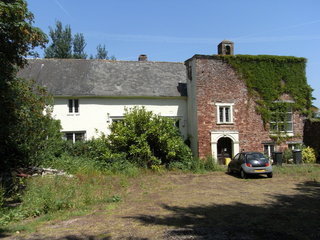
Blagdon historically in the parish of Paignton in Devon, England (today in the parish of Collaton St Mary), is a historic Manor, the seat of the Kirkham family from the 13th to 17th centuries. The manor house known as Blagdon Manor (House) (or Blagdon Barton) survives as a grade II* listed building about two miles west of the historic centre of the town of Paignton, situated behind the "Blagdon Inn" public house (former stables), and almost surrounded by the "Devon Hills Holiday Park" of caravans and mobile homes, set-back at the end of a short driveway off the A385 Paignton to Totnes road. The settlements or farms of Higher Blagdon, Middle Blagdon and Lower Blagdon are situated to the north of the manor house.

The title Baron Cobham has been created numerous times in the Peerage of England; often multiple creations have been extant simultaneously, especially in the fourteenth century.